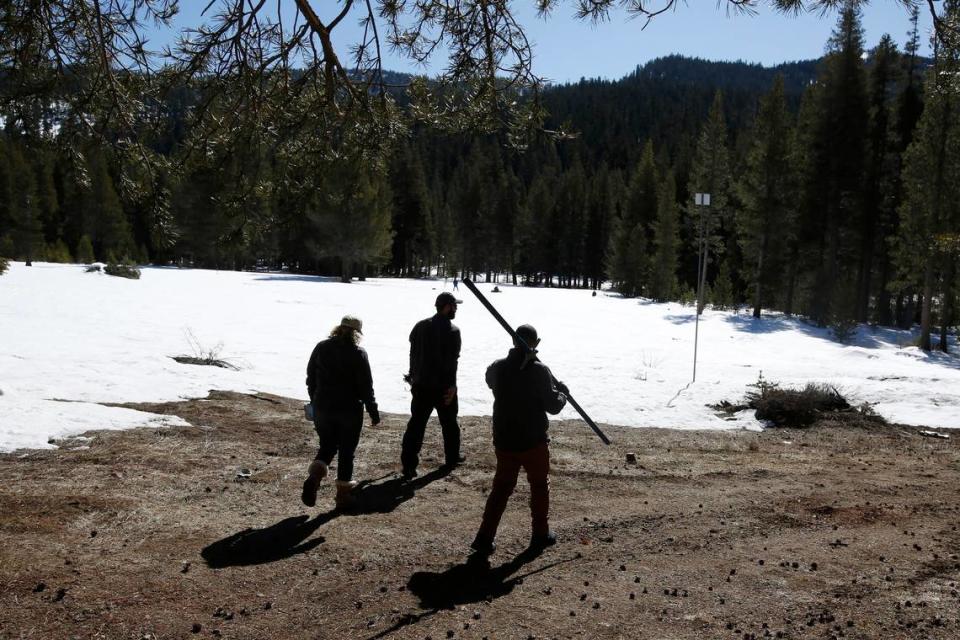Sierra Nevada snowpack could largely vanish by 2040s as climate warms, scientists say
Could climate change destroy the Sierra Nevada snowpack?
A team led by scientists at Lawrence Berkeley Laboratory says the snowpack — a critical piece of California’s delicate water delivery system, not to mention a source of winter recreation for Northern Californians — could essentially vanish for years at a time as the warming climate erodes snowfall.
The scientists’ newly-published study doesn’t say snow would disappear forever. Instead, it predicts that much of the Sierra would experience five straight years of “low-to-no snow” starting in the late 2040s. The mountain region could endure 10 straight years with little or no snow beginning in the late 2050s.
While scientists have been saying for years that the Sierra snowpack has been gradually shrinking, the Lawrence Berkeley study, published recently in the journal Nature Reviews Earth & Environment, predicts that the effects of climate change will accelerate dramatically in the 2050s — not just in the Sierra but across mountain ranges in the Western United States.
“In all regions, an abrupt transition occurs in the mid- to- late twenty-first century,” the study says. By the second half of the century, more than three-quarters of all winters in the West’s mountain ranges will be classified as having little to no snow.
The implications for California are enormous. As it is, climate change has already intensified the current drought, scientists say. After a relatively dry winter, an early spring heat storm evaporated a major portion of the Sierra snowpack — erasing an estimated 800,000 acre-feet of water in a matter of weeks. That would have been enough water to fill most of Folsom Lake.
A future with almost no snow could cripple California water supplies for long stretches of time.

The state’s elaborate, man-made delivery network depends in large part on snow residing in the Sierra — and then gradually melting in the spring and early summer, providing runoff to replenish California’s reservoirs for the dry months. In an average year, the snowpack can store 30% of the state’s water supply.
“The system has been developed with having this wonderful snowpack,” said Jay Lund, a UC Davis watershed scientist who wasn’t involved in the new study. Without an ample snowfall, “it makes it harder to catch that runoff.”
Lund said scientists have been predicting for years that the region’s snowfall will continue to wither, and “we all have to be prepared for having less snowpack.”
Without a snowpack, some experts may advocate building more reservoirs to store the rainfall, and the state is already planning to spend billions on a variety of reservoir projects over the next decade. But Lund said a much cheaper alternative would be to use the rains to recharge California’s badly depleted groundwater aquifers.
The Lake Tahoe area narrowly escaped the devastation of the Caldor Fire earlier this year. A shriveled snowpack could undermine Tahoe’s role as a wintertime tourist destination.
Mindful that snowfall is becoming less reliable, most of the Tahoe-area ski resorts have invested millions in recent years on additional artificial snow-making equipment. They’ve also built up their infrastructure for summer recreation — zip lines and “summer tubing” at Heavenly, a rope course at Granlibakken, and a skateboard park and bike trails at Boreal, to name a few.

 Yahoo Finance
Yahoo Finance 